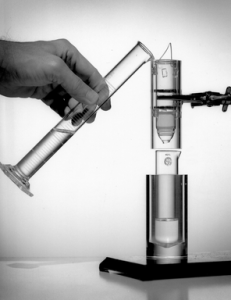
Medical isotope generators are used to produce many commonly used imaging isotopes in the radiopharmaceutical medicine market.
Gallium-68 and Technetium- 99 (Tc-99) generators are very radioactive and require shielding which is typically comprised of either lead or tungsten. These radioactive generators need to offer shielding that allow them to be properly shipped and used in their applications. For this shielding, most companies turn to lead, tungsten or a combination of both metals to provide the best shielding solution.
Tungsten vs. Lead
Tungsten has a density of 17.3 g/cc whereas lead has a density of 11.34 g/cc. However, tungsten costs a minimum of 25 times the price of lead because of the material difference and the processing needed. But it is good to remember that tungsten offers a more robust shield because it is far harder than lead. In many applications, the best solution is a hybrid option where lead, tungsten and other materials are used to provide the most functional and cost effective result.
The Benefit of Multiple Material Use
Through the use of multiple materials, it is possible to cast tungsten or molybdenum inserts into products such as radioactive generator shields and other transport pigs. These shipping pigs can then benefit from placing the highest density material where it is needed most while the lower density lead or steel is placed in other areas which require lower density for shielding or for structural applications.
If you are in need of a shielding container or generator shield for radiopharmaceutical material including Moly-99, Ge-68 or others, contact Vulcan GMS to review your shielding and transport options.

